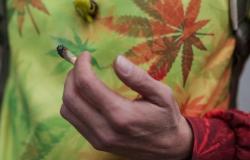
-
The 2021 Inspiration4 mission was SpaceX’s first fully private commercial flight
-
The telomeres of the four crew members, chromosome structures that shorten with age, lengthened
In September 2021, SpaceX launched the first fully private space mission into orbit: Inspiration4. It lasted just 71 hours, but it was enough for the four crew members to become genetically younger.
Four skin and blood samples. Inspiration4 was not for scientific purposes. It was a commercial flight to Earth orbit on the Crew Dragon spacecraft that billionaire Jared Isaacman financed for charitable purposes.
However, the crew, including Isaacman himself, lent themselves to science after Hayley Arceneaux, the medical officer on board the ship, took skin and blood samples from her companions and herself. After their return to Earth, a battery of tests on the samples has continued to yield surprising results.
A quick and deep effect. A recent analysis of genetic changes in the four space tourists has shown that their telomeres, the structures that protect the ends of their chromosomes and which shorten with age, lengthened significantly in space.
The results of the experiment, published in Nature, suggest that the space environment has a rapid and profound effect on the human body. Within a few hours in orbit, Inspiration4’s four crew members saw significant changes in biological markers in their blood.
There is a but. Upon returning to Earth, the telomeres shrank almost immediately, becoming even shorter than they were before the mission. They also suffered bone and muscle loss, and increased brain stress, which did not return to pre-flight levels for six months (slightly less in the case of the two women on the mission, Arceneaux and geologist Sian Proctor).
“We don’t fully understand what causes these rapid changes, but we hope to know the answer in the future,” said study leader Susan Bailey. The relativistic speed meant that the protagonists of Interstellar did not age, but the results of this three-day flight are a mystery.
The case of Scott Kelly. One of the most famous studies on the physiological changes that an astronaut undergoes in space is that of Scott Kelly, who spent a year on the International Space Station in 2015. Upon returning he was compared to the evolution of his twin brother Mark Kelly.
Telomeres, which typically shorten with time and stress, also lengthened in Kelly’s case. But what the new study shows is that just a few days of exposure to space are enough to see bodily changes including in astronauts’ proteins and gene expression.
Image | Hayley Arceneaux (Inspiration4)
In Xataka | “There is a 60% chance that he will travel to the Moon”: we speak with Pablo Álvarez, the first Spanish astronaut since Pedro Duque





